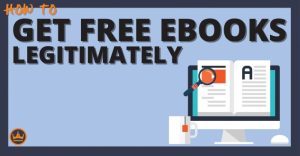
Step into the world of digital learning with E-books for learning at your fingertips! Dive into a realm where traditional textbooks meet innovative technology, offering a whole new dimension to education.
Discover the advantages, accessibility, interactivity, and customization that E-books bring to the table, revolutionizing the way we learn.
E-BOOKS

E-books, short for electronic books, are digital versions of traditional printed books that are designed to be read on electronic devices such as e-readers, tablets, smartphones, or computers. They differ from physical books in that they do not require paper, ink, or physical storage space, making them more convenient and environmentally friendly.One of the main advantages of e-books over physical books for learning purposes is their portability.
E-books allow students to carry an entire library of textbooks and reference materials in a single device, eliminating the need to carry heavy books around. Additionally, e-books often come with features such as search functions, hyperlinks, and highlighting capabilities, making it easier for students to navigate and interact with the content.
Popular E-book Formats
- PDF: Portable Document Format, widely used for e-books as it preserves the formatting and layout of the original document.
- ePub: Open eBook format that is compatible with most e-readers and mobile devices, allowing for adjustable text sizes and reflowable text.
- MOBI: Mobipocket format commonly used for Amazon Kindle devices, supporting features like annotations and bookmarking.
- AZW: Amazon’s proprietary format for Kindle e-books, offering DRM protection and synchronization across devices.
ACCESSIBILITY

E-books offer a range of benefits that make them more accessible compared to physical books. They provide a convenient and portable way to access a vast amount of information for learning purposes.
Portability and Convenience
E-books can be accessed on various devices such as smartphones, tablets, laptops, and e-readers, allowing learners to carry their entire library with them wherever they go. This eliminates the need to carry heavy physical books and provides the flexibility to study anytime and anywhere.
- E-books can be easily downloaded and stored on devices, saving space and reducing clutter.
- Users can adjust text size, font, and background color for better readability, catering to individual preferences and needs.
- Bookmarking, highlighting, and note-taking features in e-books help in organizing and revisiting important information efficiently.
Tools and Software for Accessibility
There are several tools and software designed to enhance the accessibility of e-books for learners with disabilities or specific learning needs.
- Screen readers like JAWS and NVDA assist visually impaired users by converting text into speech.
- Text-to-speech software enables users to listen to the content of e-books, enhancing comprehension and accessibility for auditory learners.
- Accessibility features such as alternative text descriptions for images, interactive elements, and navigation options improve the overall usability of e-books.
INTERACTIVITY
E-books offer a wide range of interactive features that make learning more engaging and dynamic. These features go beyond traditional textbooks, allowing users to actively participate in their learning experience.Multimedia elements play a crucial role in enhancing comprehension in e-books. By incorporating videos, audio clips, animations, and interactive graphics, complex concepts can be simplified and presented in a more digestible format.
Visual aids and interactive exercises help reinforce learning and cater to different learning styles.
Examples of Interactive E-books
- “The Elements: A Visual Exploration”
-This interactive e-book provides a visually stunning and interactive journey through the periodic table, making chemistry more engaging and accessible. - “The Human Body”
-An interactive e-book that allows users to explore the human anatomy through 3D models, quizzes, and interactive diagrams, making biology lessons more interactive and engaging. - “Interactive Mathematics”
-A series of interactive e-books that use simulations, games, and interactive exercises to help students grasp complex mathematical concepts in a fun and engaging way.
CUSTOMIZATION
E-books offer a unique advantage in providing personalized learning experiences by allowing users to tailor the content to their individual needs. This flexibility in customization caters to diverse learning styles and preferences, enhancing the overall educational experience.
Adaptable Content
E-books can adapt content to suit different learning styles by offering features such as:
- Adjustable font sizes and styles for visually impaired readers or those with reading difficulties.
- Interactive elements like quizzes, simulations, and multimedia components for hands-on learners.
- Highlighting and note-taking functionalities for users who prefer annotating text for better comprehension.
- Audio narration options for auditory learners or individuals who prefer listening to content.
Personalized Learning Paths
E-books allow users to create personalized learning paths by:
- Choosing the order in which they access chapters or sections based on their understanding and interest.
- Setting bookmarks and saving progress to easily resume reading at a later time.
- Customizing the display settings to optimize readability based on personal preferences.
- Accessing additional resources or supplementary materials tailored to their specific learning goals.
Final Review
As we wrap up our journey through the realm of E-books for learning, it’s clear that the digital landscape offers endless possibilities for enhancing educational experiences. Embrace the future of learning with E-books as your trusted companions in the pursuit of knowledge.
FAQ Summary
Are e-books more cost-effective than physical books?
Yes, e-books often come at a lower price point than physical books, making them a budget-friendly option for students.
Can e-books be accessed offline?
Some e-book platforms allow users to download content for offline access, ensuring learning can continue even without an internet connection.
How can multimedia elements enhance e-books?
Interactive elements like videos, audio clips, and animations can make learning more engaging and improve comprehension for students.
What tools can help customize e-books for individual learning styles?
Features like adjustable font sizes, color themes, and interactive quizzes are examples of tools that cater to diverse educational needs and preferences.





